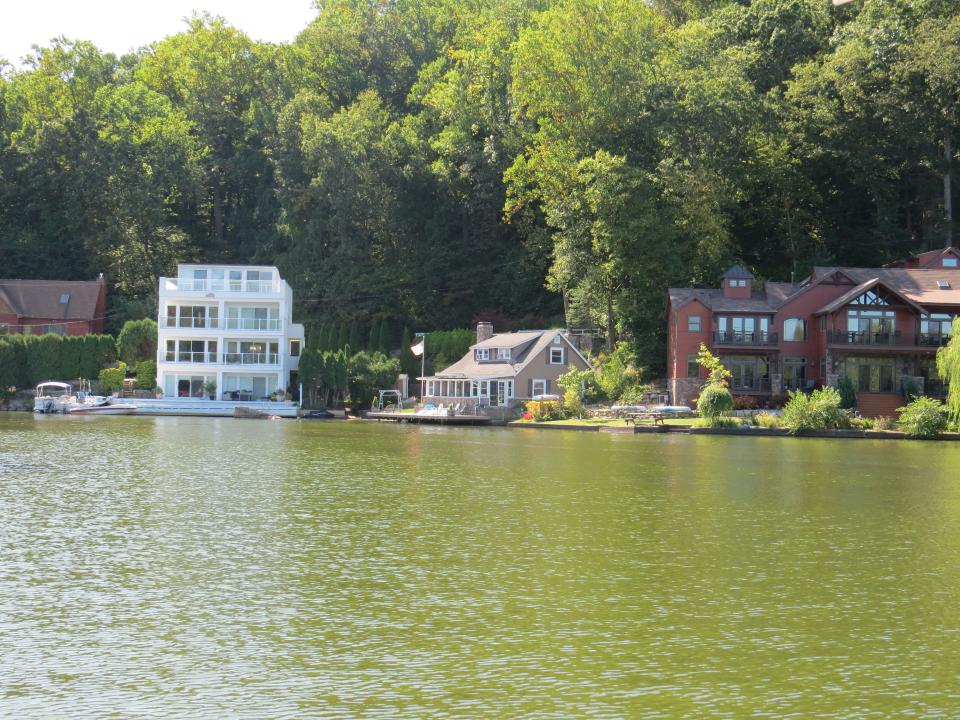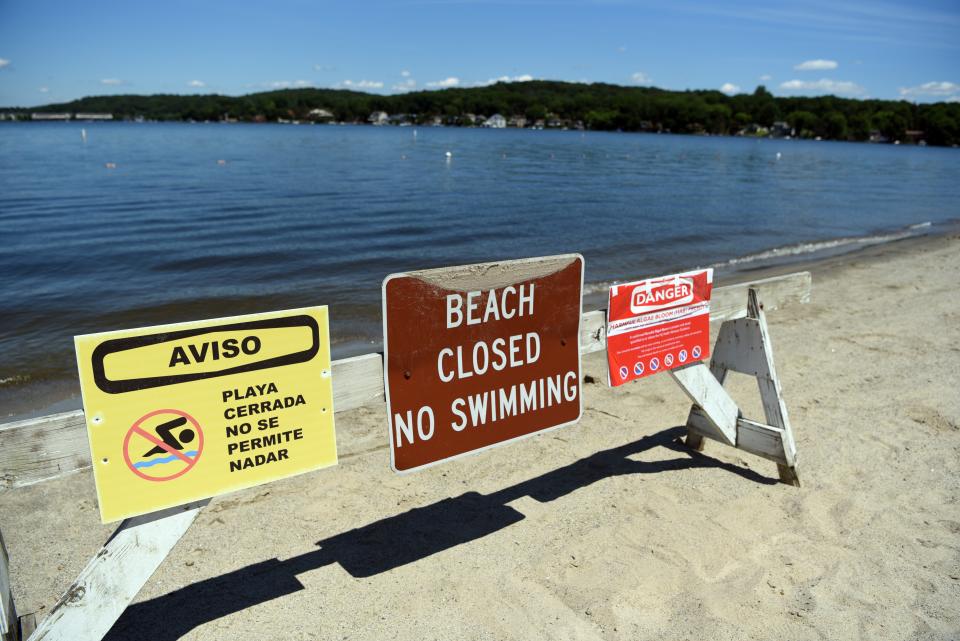Pumping oxygen into deep areas of Lake Hopatcong may solve algae problem, but it is costly
A deep-water oxygenation system could be in the cards for Lake Hopatcong, New Jersey's largest lake, as stakeholders seek to stifle the kind of harmful algal blooms that effectively closed it in 2019.
During a meeting in Roxbury on Thursday, representatives of environmental engineering firm and Morris County government consultant Princeton Hydro recommended oxygenation as a means to manage the lake's internal phosphorus load.
Although nutrient-rich stormwater and septic leachate triggered the 2019 cyanobacteria blooms, the continuous release of phosphorous from organic matter in the lake's low-oxygen, deep-water sediments sustained the blooms through the growing season, said Fred Lubnow, the firm's senior technical director of ecological services.
Remember Sandy? $300M flood resiliency projects break ground in Meadowlands and Hoboken
"You need microbes to eat the organic matter," Lubnow said. "They need oxygen."
Preliminary cost estimates for the oxygenation project are as high as $2.5 million. Patrick Rose, a project manager for Princeton Hydro, described the project as relatively straightforward but significant due to the lake's size. The process involves producing oxygen in shoreline sheds and pumping it into chambers in the lake's deepest areas, where it is mixed with water and released directly over the sediment. The goal is to keep the lake's plentiful iron-bound phosphorus oxygenated and, therefore, inert.

"Once the oxygen gets low, the bond breaks and the phosphorus is released," Rose said.
In June 2019, intense storms created runoff that disturbed lakebed sediments and stimulated algae growth in lakes throughout the region, resulting in harmful algal blooms. Lake Hopatcong and Greenwood Lake, New Jersey's largest home-lined lakes, were effectively shut down. The impact on recreational activities and businesses led state officials to fund projects aimed at addressing the issue.
State-funded projects at Lake Hopatcong started within a year. An aeration curtain installed at Shore Hills Beach and Country Club under a grant provided to the Lake Hopatcong Commission started operating in November 2020. The wall of bubbles deflects surface scum, heavy concentrations of cyanobacteria that are highly visible and especially toxic. Money was more recently provided to Morris County for an oxygenation system feasibility and design analysis. The developing design and its costs and location are expected to be the subject of another public meeting in early 2024, officials said.
Winter is coming: 8 ways to get your North Jersey home ready
Over the past three decades, phosphorous levels in the lake's surface waters have been on the decline, records show. Abatement measures in the watershed, including weed harvesting, septic management and fertilizer bans, have had an impact, Lubnow said.
However, deep-water phosphorous loading remains a growing concern, particularly during the summer, when decomposing organic matter supplies up to 70% of the lake's phosphorous. To manage internal loading, a product that binds with phosphorous will be introduced next year. Lubnow said it is expected to be a bridge to a more long-standing restoration technique.

Securing funding for the oxygenation project remains a challenge. While the state has provided grants for design and feasibility work, it has not allocated funds for equipment purchase and installation. Private funding is a possibility but not guaranteed, officials said.
Reserved for deep, low-oxygen waters, the oxygenation system would be placed in the deep center of the lake south of Halsey Island and would only indirectly benefit the lake's HAB-prone coves, shallows and shores, officials said. It may be more expensive than other systems designed to combat harmful algal blooms, but it differs in its scalability and adaptability in maintaining phosphorous balance and temperature stratification, Lubnow said.
Retail medicine: Explosion of urgent care centers in NJ changes health care landscape
Lake temperature is one of three key ingredients for a HAB, he said. The other two are still water conditions and total phosphorous concentrations, he said. Like most lakes in the region, Lake Hopatcong's water temperature has risen significantly over the past 30 years, records show.
The surface temperature at one station has gone from about 74 degrees Fahrenheit in July to roughly 80. Circulating the water to get oxygen to the deepest parts of the lake could further disturb a cold-water fish ecosystem that is already compressing due to climate change, Lubnow said.
This article originally appeared on NorthJersey.com: Pumping oxygen into Lake Hopatcong may solve algae problem

